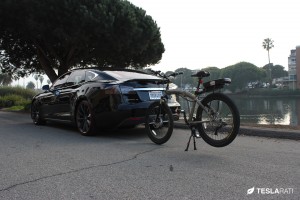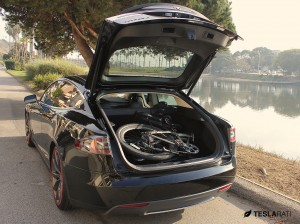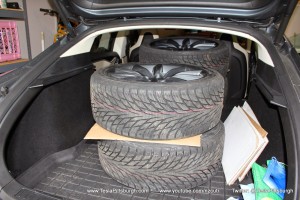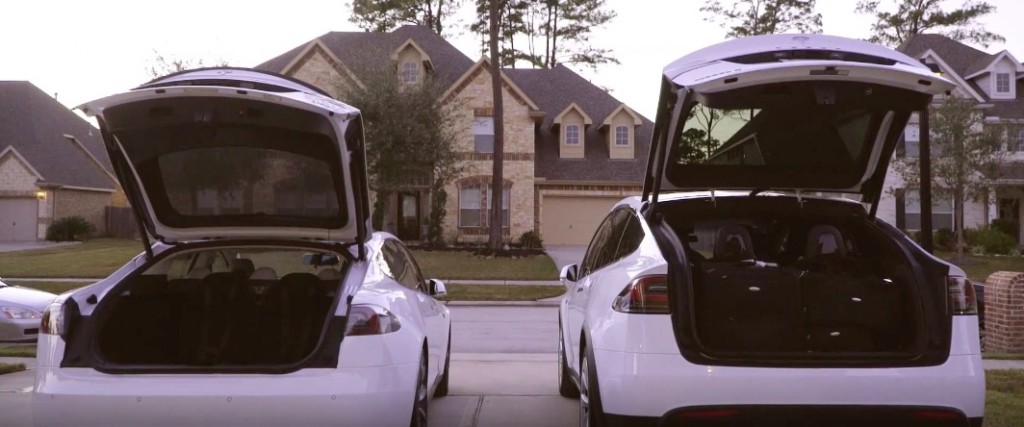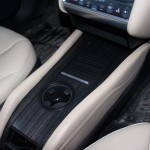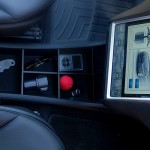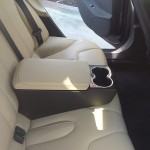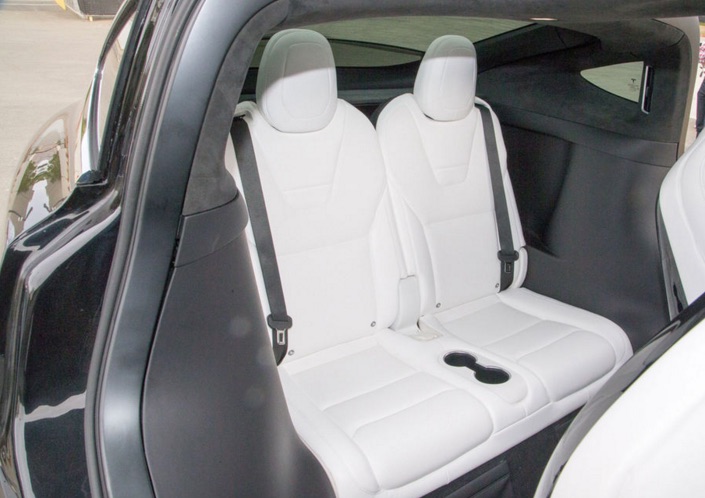Lifestyle
Comparison of Model X vs Model S Storage Space
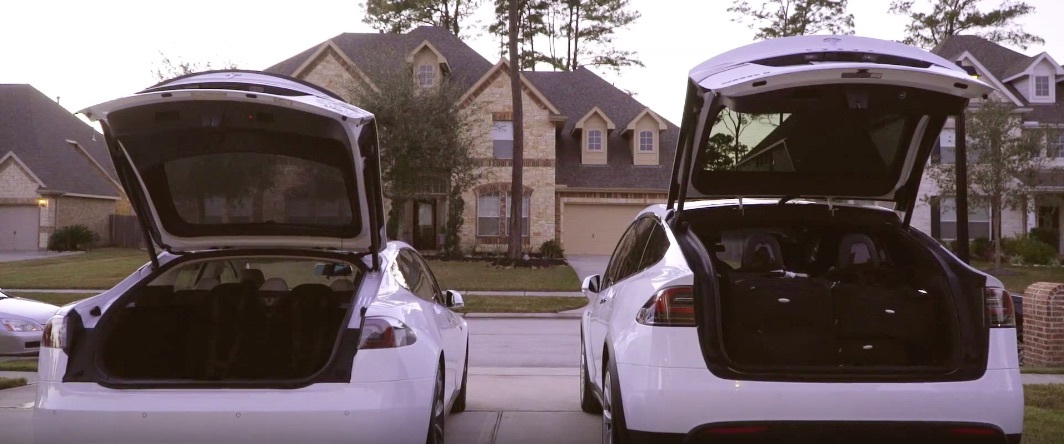
From the outside, the Tesla Model X crossover SUV shares similar dimensions and styling cues with the Model S sedan. Both vehicles are just shy of 200 inches in length, and both vehicles have front and rear axles situated on each end of the skateboard style floor-mounted battery, thus sharing similar wheelbase dimensions of 120 in (304.8 cm) for the Model X and a slightly shorter 116.5 (295.9 cm) for the Model S.
Despite the similarities, there’s distinct differences in features and amenities between the electric crossover and sedan that could impact everyday practicality depending on your lifestyle.
We’ll be doing a multi-part series comparing select features of the Model X vs Model S, but for the purpose of this post, we’re taking a look at differences in storage space between the two vehicles.
Model X vs Model S Cargo Space
The Model X is a taller and roomier vehicle than the Model S, but when it comes to rear cargo space, the Model S actually has more useable storage space. Here’s why, and it’s quite simple.
The Model S second row seats fold flat leaving for an expansive open space that can store anything from long dresser bureaus to even skis!
Pictured above: Model S trunk with full-size folding electric bike and a full set of winter wheels and tires
The Model X on the other hand has third row seating that can also fold flat, but the overall length of storage is constrained by the backs of the second row seats. These seats do not fold down and instead capable of sliding back and forth on the seat’s mono post track in order to maximize trunk space.
One benefit the Model X cargo space has over the Model S is the taller overall height within the trunk. This allows for vertical stacking of cargo as seen in the following video by JH Photography. They do an excellent job performing a side-by-side comparison of both trunks.
Nooks, Crannies and Cupholders
Yes, cupholders. The Model S was designed with an open center space between the two front seats given Musk’s appreciation for clean and open designs. But it wasn’t before long that owners realized they just couldn’t live without the convenience of a personal storage compartment and cupholder. Thus the Tesla center console movement was born, spearheaded by the folks at EVannex.
Tesla seems to have learned that people want their creature comforts and lots of it. The Model X comes standard with personal storage space and cupholders between every row of seats. They’ve also incorporated storage space into the lower door panels and USB ports directly in the front center section of the second row.
saabkyle04 has produced a comprehensive video walkthrough of the Model X that’s really worth checking out. Since the video is nearly 40 minutes long, we’ve embedded only the portion of the video that highlights the Model X center console.
Front Trunk a.k.a.”frunk” Space
Early versions of the Model S without the dual motor configuration have an empty space in the area beneath the front windshield wipers. This extra “cubby” also known as “the microwave”, due to its rectangular shape, makes for remarkable storage capacity beneath the hood.
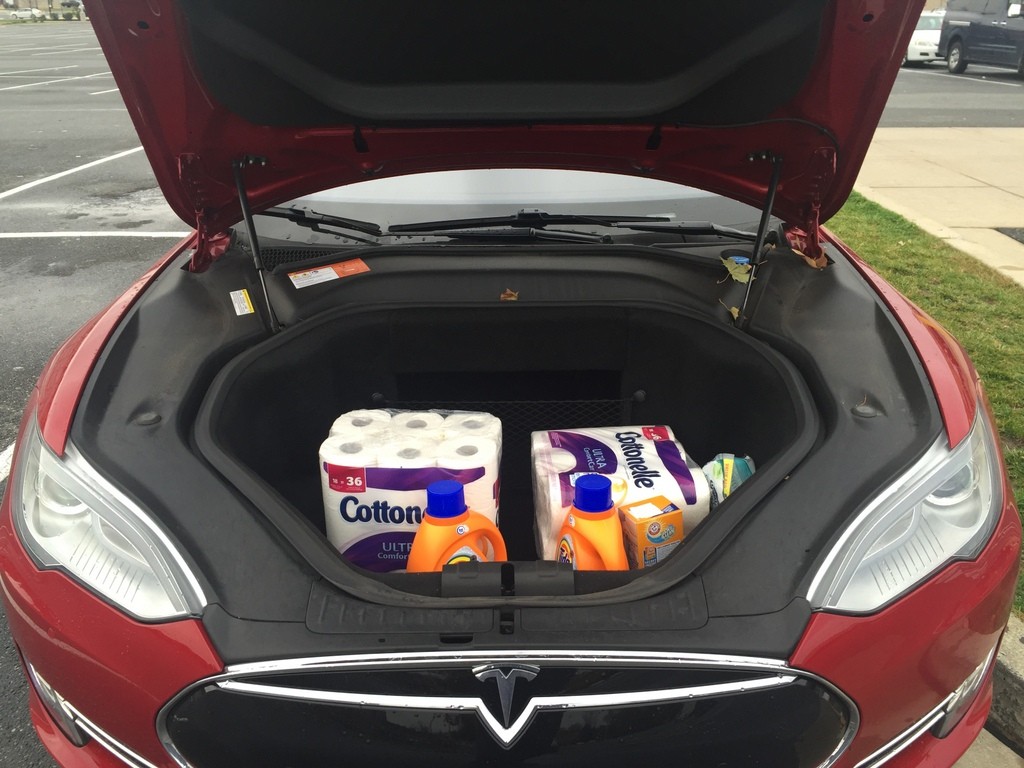
Rear wheel drive Model S frunk [Source: Electric Jen]
Later versions of the Model S with the dual motor configuration lost the additional microwave storage area. The same goes for the Model X which also sees a front motor mounted in the same section where the microwave would be.
Referencing the video by JH Photography, we can see that Model X frunk is quite spacious. Though it’s not large enough to hold two full size golf bags as mentioned by Elon during the Model X reveal, the huge frunk can accommodate a single golf bag, and some luggage.

Lifestyle
Tesla Model S Plaid battles China’s 1500 hp monster Nurburgring monster, with surprising results
There is just something about Tesla’s tuning and refinement that makes raw specs seem not as game-changing.

The Tesla Model S Plaid has been around for some time. Today, it is no longer the world’s quickest four-door electric sedan, nor is it the most powerful. As per a recent video from motoring YouTube channel Carwow, however, it seems like the Model S Plaid is still more than a match for some of its newer and more powerful rivals.
The monster from China
The Xiaomi SU7 Ultra is nothing short of a monster. Just like the Model S Plaid, it features three motors. It also has 1,548 hp and 1,770 Nm of torque. It’s All Wheel Drive and weighs a hefty 2,360 kg. The vehicle, which costs just about the equivalent of £55,000, has been recorded setting an insane 7:04.957 at the Nurburgring, surpassing the previous record held by the Porsche Taycan Turbo GT.
For all intents and purposes, the Model S Plaid looked outgunned in Carwow’s test. The Model S Plaid is no slouch with its three motors that produce 1,020 hp and 1,420 Nm of torque. It’s also a bit lighter at 2,190 kg despite its larger size. However, as the Carwow host pointed out, the Model S Plaid holds a 7:25.231 record in the Nurburgring. Compared to the Xiaomi SU7 Ultra’s record, the Model S Plaid’s lap time is notably slower.
Real-world tests
As could be seen in Carwow’s drag races, however, Tesla’s tech wizardry with the Model S Plaid is still hard to beat. The two vehicles competed in nine races, and the older Model S Plaid actually beat its newer, more powerful counterpart from China several times. At one point in the race, the Xiaomi SU7 Ultra hit its power limit due to its battery’s temperature, but the Model S Plaid was still going strong.
The Model S Plaid was first teased five years ago, in September 2020 during Tesla’s Battery Day. Since then, cars like the Lucid Air Sapphire and the Xiaomi SU7 Ultra have been released, surpassing its specs. But just like the Model Y ended up being the better all-rounder compared to the BYD Sealion 7 and the MG IM6, there is just something about Tesla’s tuning and refinement that makes raw specs seem not as game-changing.
Check out Carwow’s Model S Plaid vs Xiaomi SU7 drag race video below.
Lifestyle
500-mile test proves why Tesla Model Y still humiliates rivals in Europe
On paper, the BYD Sealion 7 and MG IM6 promised standout capabilities against the Model Y.

BYD is seeing a lot of momentum in Europe, so much so that mainstream media has taken every opportunity to argue that the Chinese automaker has beaten Tesla in the region. But while BYD sales this year in Europe are rising and Tesla’s registrations remain challenged, the raw capabilities of vehicles like the Model Y are difficult to deny.
This was highlighted in a 500-mile challenge by What Car? magazine, which showed that the new Tesla Model Y is more efficient, cheaper to run, and more reliable than rivals like the BYD Sealion 7, and even the nearly 400 KW-charging MG IM6.
Range and charging promises
On paper, the BYD Sealion 7 and MG IM6 promised standout capabilities against the Model Y. The Sealion 7 had more estimated range and the IM6 promised significantly faster charging. When faced with real-world conditions, however, it was still the Model Y that proved superior.
During the 500-mile test, the BYD nearly failed to reach a charging stop, arriving with less range than its display projected, as noted in a CarUp report. MG fared better, but its charging speeds never reached its promised nearly-400 kW charging speed. Tesla’s Model Y, by comparison, managed energy calculations precisely and arrived at each stop without issue.
Tesla leads in areas that matter
Charging times from 25% to 80% showed that the MG was the fastest at 17 minutes, while Tesla and BYD were close at 28 and 29 minutes, respectively. Overall efficiency and cost told a different story, however. The Model Y consumed 19.4 kWh per 100 km, compared to 22.2 for MG and 23.9 for BYD. Over the full trip, Tesla’s charging costs totaled just £82 thanks to its supercharger network, far below BYD’s £130 and MG’s £119.
What Car? Magazine’s testers concluded that despite BYD’s rapid sales growth and the MG IM6’s seriously impressive charging speeds, Tesla remains the more compelling real-world choice. The Model Y just offers stability, efficiency, and a proven charging infrastructure through its Supercharging network. And as per the magazine’s hosts, the Model Y is even the cheapest car to own among the three that were tested.
Watch What Car? Magazine’s 500-mile test in the video below.
Lifestyle
Tesla Cybertruck slapped with world’s least intimidating ticket, and it’s pure cringe
One cannot help but cringe and feel second-hand embarrassment at the idea of a person just driving around with a stack of these babies.

A Cybertruck parked at Stanford Shopping Center in California was recently hit with what might be the most try-hard piece of paper ever slipped under a wiper blade: a “fake citation” accusing the driver of supporting a “fascist car.”
The note, shared on X by Tesla staff program manager Ryan Torres, quickly made the rounds on X, where it quickly gained attention as an example of how not to protest.
The world’s least intimidating ticket
According to the citation, the supposed “violation” was “driving a fascist car.” The remedial action? Take the bus, call an Uber, or ride a bike. The note also dubbed Elon Musk a “chainsaw-wielding Nazi billionaire.” Now, protests against Tesla and Elon Musk have become commonplace this year, but one cannot help but cringe and feel second-hand embarrassment at the idea of a person just driving around with a stack of fake anti-Tesla/Musk citations.
Torres pointed out the irony himself in his post on X. Tesla currently employs over 140,000 Americans, and SpaceX has put the U.S. firmly back at the top of space technology. As Torres put it, maybe the person behind the world’s least intimidating ticket should “read a book on innovation before vandalizing” other people’s property.
Peak performative clownery
Not to mention that the fake ticket’s logic collapses under its own weight. EVs like the Cybertruck are literally designed to reduce emissions, not “destroy the economy.” If anything, Tesla has bolstered the United States’ economy by fueling jobs in engineering, manufacturing, and clean energy. It’s not the first time a Tesla has been the target of vandalism or politically charged notes, but this one stands out for sheer cringe value.
Torres summed it up neatly: “Peak clownery.” On that point, at least, the citation earns full marks. In a way, though, perhaps cringe fake tickets are not as bad as the literal firebombs that were being thrown at Tesla stores and cars earlier this year because some critics were gleefully misinformed about Elon Musk.
